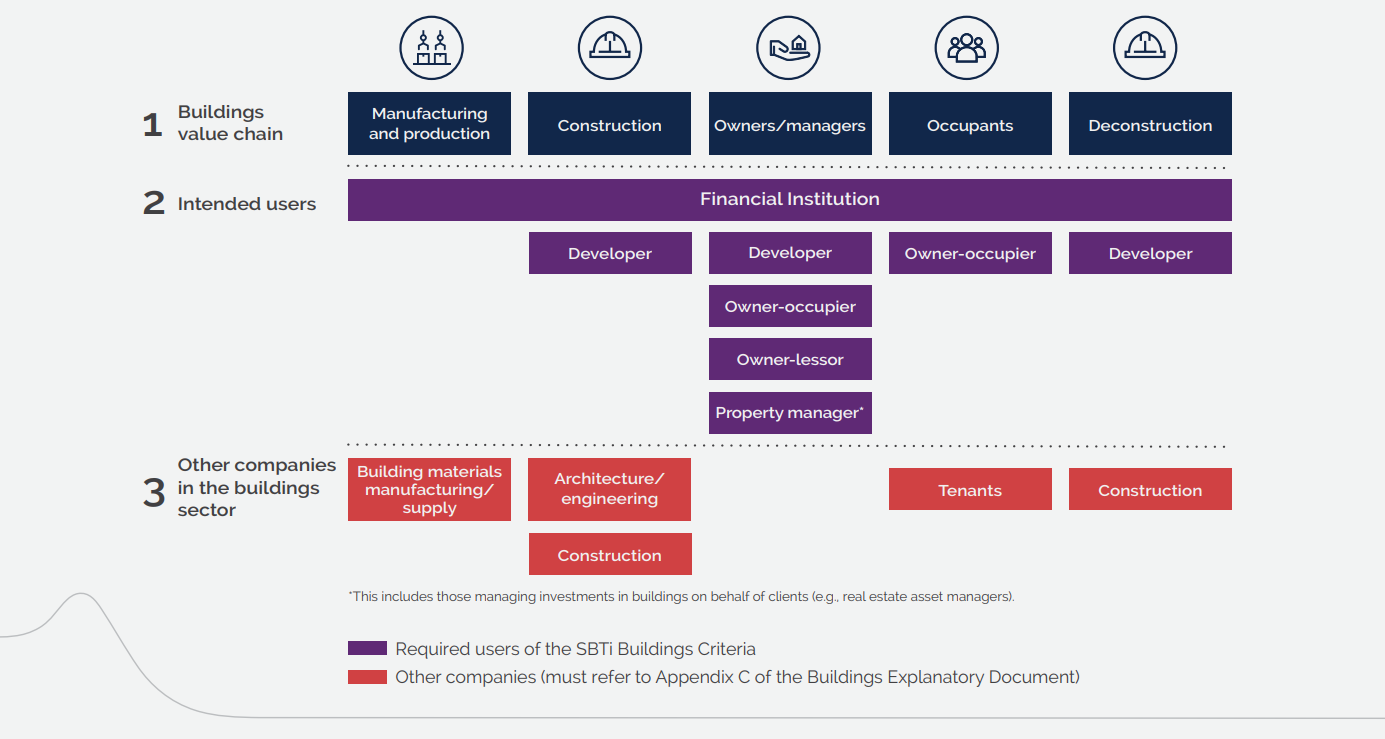Insights
SBTi's new net-zero criteria for the built environment.
Providing clarity on carbon performance.
The Science Based Targets Initiative (SBTi) has launched its new net-zero criteria for the built environment.
SBTs specify how much and how quickly a company would need to reduce its GHG emissions at a minimum to align with limiting global temperatures to 1.5°C, as per the Paris Agreement.
The SBTi have previously provided guidance for several key sectors but buildings, which account for 34% of global energy consumption, have been missing from the roster. With the sector predicted to grow by 15% by 2030, the new guidance provides welcome clarity on how we need to apply SBTs. The new guidance builds on the previously released Corporate Net-Zero Standard and is applicable for users across the value chain including:
- Financial institutions
- Developers
- Asset and portfolio managers
- Owner-occupiers
- Tenants
- Property managers

This gives much needed clarity around how to align net zero carbon buildings and portfolios with a 1.5oC world. 5 key components of the guidance are:
- Whole Building Approach: The framework takes a holistic view, covering all energy consumption and fugitive emissions from building operations. This approach ensures that every aspect of a building’s lifecycle is considered in the decarbonisation process.
- Stopping Fossil Fuel Installations: One of the most critical actions is the public commitment to halting the installation of fossil fuel-based heating, cooking, power generation, and hot water equipment by 2030. This step is essential for reducing the sector’s reliance on fossil fuels and transitioning to renewable energy sources.
- Reducing In-Use Operational Emissions: The SBTi has collaborated with the Carbon Risk Real Estate Monitor (CRREM) to develop regional pathways for in-use emissions. These pathways reflect variations in local power grids and building usage, ensuring that targets are both ambitious and achievable.
- Reducing Upfront Embodied Emissions: Companies are required to set targets for reducing emissions from raw materials, manufacturing, transportation, and construction. This focus on embodied emissions is crucial, as a significant portion of a building’s carbon footprint is generated before it is even occupied.
- Retrofitting Inefficient Buildings: As 80% of the buildings that will exist in 2050 are already built, retrofitting is a key strategy for decarbonisation. The SBTi recommends that companies commit to implementing energy efficiency improvements to bring older buildings in line with modern sustainability standards.
Currently, over 9000 companies have submitted targets to the SBTi of which over 6000 have approved targets. Over 300 real estate firms have submitted to the SBTi under the corporate guidance. The standard received widespread praise from industry during its development indicating a strong desire from the sector for alignment. A stamp of approval from the SBTi could provide the clarity on carbon performance that investors and stakeholders are looking for. We’ll have to watch this space…
UK Net Zero Carbon Building Standard
The UK Net Zero Carbon Building Standard focuses on requirements for individual assets to be aligned with Net Zero Carbon, however, the SBTi Building Sector Guidance is suited to portfolios and organisations with a large real estate portfolio. The two guidance documents are complimentary of each other and have different use cases.
To understand more, or chat about how to align and decarbonise your organisation with our Strategic Carbon team: